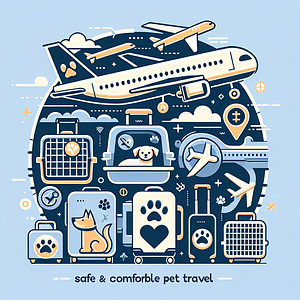As you plan for your flight with your pet

Choose the most direct flight to your destination. This will help reduce the stress on your pet.
If warm temperatures are a concern, book an early morning, evening, or overnight flight when the temperatures are cooler. If cold weather is an issue, book your flight for the middle of the day.
Contact the airline you and your pet will be traveling on. Make sure your pet has a reservation and find out if there are any new travel restrictions or issues you need to be aware of. You will want to inform the airlines as early as possible as some limit the number of pets on a flight.
When you choose a kennel/carrier for you pet make sure:
- It is sized correctly. There should be enough room for the animal to stand and sit in a natural position, turn around, and lie down. Some airlines require brachycephalic, or pug nosed dogs and cats, to have a kennel an extra size larger for their safety.
- The kennel door closes securely. A major cause of pet injury during airline travel is the animal getting out of the kennel. The door must not be locked as federal regulations require that your pet is accessible in the event of an emergency.
- Approved for air transport.
If your pet is not crate trained, you should begin crate training as early as possible to ensure that your pet is comfortable in the kennel. Trying to escape and actually escaping from the kennel during the flight is the most common cause of injury for pets that fly. Some pets may take up to 6 months to become comfortable in a kennel, and some may never completely accept the kennel. If your pet does not become comfortable with the crate before the flight, you may want to reconsider flying your pet.
If you are traveling to a foreign country or Hawaii, make sure that you have met all the quarantine and health requirements of your destination. In some cases failure to do so may cause your pet to be destroyed.
Honestly evaluate how you think your pet will react to the experience. If you feel that your pet might injure itself by attempting to escape from the kennel during shipment, you should look for other options in transporting your pet. Not every pet is a good candidate for air travel. You know you pet and are in the best position to make this decision.
Federal regulations require that pets be at least 8 weeks old and weaned at least 5 days before flying.
Animals who are in heat or who are pregnant should not travel by air.
« Back
